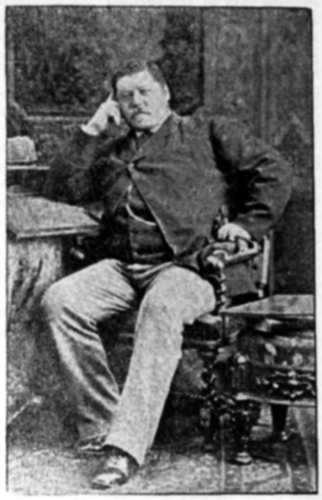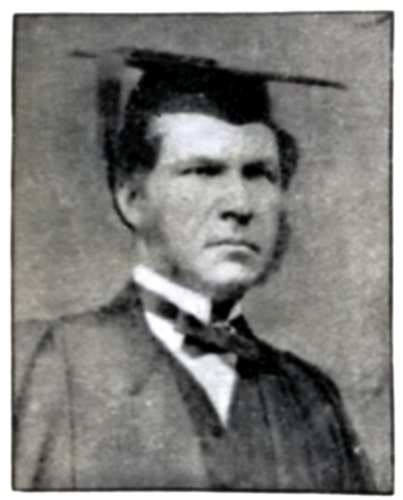|
Close in the wake of Wolseley's
Expedition, there arrived on the 2nd of September, Adams G. Archibald,
the newly-appointed Governor of the new Province of Manitoba. His
arrival was greeted with joy, for he was a man of high character, and of
much experience in his native Province of Nova Scotia. The two volunteer
regiments, the Quebec and Ontario battalions, were quartered for the
winter, the former in Lower Fort Garry, the latter in Fort Garry. The
new Governor took up his abode in Fort Garry, in the residence with
which our story is so familiar. The organization of his government began
at once. The first Government Building stood back from the street in
Winnipeg on the corner of Main Street and McDermott Avenue East, of the
present-day. The Legislative Council—a miniature House of Lords—of seven
members, was appointed, and electoral divisions for the election of
members to the Legislative Assembly were made to the number of
twenty-four—twelve French and twelve
English. The time for the opening of Parliament was the spring of 1871.
It was a notable day, for the citizens were much interested in
scrutinizing those who were to be their future rulers. The opening
passed off with eclat. During the first session certain elementary
legislation was passed including a short school act. There was yet no
division of parties, and a sufficient cabinet was chosen by the
Governor. Thus, institutions after the model of the mother of
Parliaments at Westminster were evolved and Manitoba—the successor of
our Red River Settlement—had conceded to it the right of local
self-government.
In the year of the first parliament of
Manitoba it was the fortune of the writer to take up his abode here.
Winnipeg, a village of less than three hundred inhabitants was in that
year, still four hundred miles distant from a railway. From the railway
terminus in Minnesota, the stage coach drawn by four horses with relays
every twenty miles, sped rapidly over prairies, smooth as a lawn to the
site of the future city of the plains.
Since that time well-nigh forty
years has passed away. The stage coach, the Red River cart, and the
shaganappi pony are things of the past, and several railways with richly
furnished trains connect St. Paul and Minneapolis with the City of
Winnipeg. More important,
the skill of the engineer has surpassed what we then even dreamt of in
his blasting of rock cuttings and tunnels through the Archæan rocks to
Fort William, and this has been done by three main trunk lines of
railway. The old amphibious route of the fur traders and of Wolseley's
Expedition has been superseded, the tremendous cliffs of the north shore
of Lake Superior have been levelled and the chasm bridged. To the west
the whole wide prairie land has been gridironed by railways all
tributary to Winnipeg, the enormous ascent of the four Rocky Mountain
ranges, rising a mile above the sea, have been crossed by the Canadian
Pacific Railway. The giddy heights of the Fraser River Canyon are
traversed, and this is but the beginning, for three other great
corporations are bending their strength to pierce the passes of the
Rocky Mountains to the Pacific Ocean. We see to-day scenes more after
the manner of the Arabian Nights Entertainments than of the humble dream
that Lord Selkirk dreamt one hundred years ago.

HON. JOHN NORQUAY
A native of Red River Settlement.
Became Cabinet Minister in 1871 afterward Premier of Manitoba.
The towns and cities of Manitoba
have sprung up on every hand where the railway has gone and these are
but the centres of business of twenty thousand farms whose owners have
come to this land, many of them empty-handed, and are now blessed with
competence and in many cases wealth. What a vindication of Lord
Selkirk's prospectus of a hundred years ago when he said: "The soil on
the Red River and the Assiniboine is generally a good soil, susceptible
of culture and capable of bearing rich crops." Lord Selkirk's dream is
fulfilled, for his land is fast becoming the grainary of the world. As
the traveller of to-day passes along the railways in the last days of
August or early in September, he beholds the sight of a life-time, in
the rattling reapers, each drawn by four great horses, turning off the
golden sheaves of wheat and other cereals. A little later the giant
threshers, driven by steam power, pour forth the precious grain, which
is hurried off to the high elevators for storage, till the railways can
carry it to the markets of the world to feed earth's hungry millions.
When the historian recalls the statement that the few cattle of the
early settlers had degenerated in size on account of the climatic
conditions, that the shaganappi pony could never do the work of the
stalwart Clydesdale, and that nothing could result from the straggling
flock of foot-sore and dying sheep, driven by Burke and Campbell from
far-distant Missouri, we look with astonishment at the horses now taken
away by hundreds to supply with chargers the crack cavalry regiments of
the Empire, at the vast consignments of cattle passing through Winnipeg
every day to feed the hungry, and flocks of sheep supplying wool for
Eastern manufacturers to clothe the naked.
One of the greatest trials of the early
Selkirk Settlers was to get schools sufficient to give the children
scattered along the river belt, even the three R's of education.
Kildonan parish manfully raised by subscription the means, unaided by
Government help, to give some opportunity to their children. It is a
notable fact which emerged in the great School Contention of twenty
years ago in Manitoba, that not a dollar had been given to schools as
aid by the old Government of Assiniboia. To-day the glory of Manitoba is
its school system. For school buildings, school organization,
attainments of the teachers, and efficient school management, the
schools of Winnipeg are probably unsurpassed in any country, and the
same is true of many other places in the Province. Two Winnipeg schools
bear the names of Selkirk and Isbister. The University of Manitoba, with
its seven affiliated colleges and twelve hundred and forty candidates in
1909 for its several examinations has its seat at the forks of the Red
and Assiniboine Rivers, and one of the colleges is on the very lot where
Lord Selkirk stood and divided up their lands to the Colonists.

ALEXANDER ISBISTER, LL.B.
Red River Patriot and Benefactor of University of Manitoba.
One of the most continued and
aggressive struggles which Lord Selkirk's Colonists maintained was seen
in the efforts put forth to worship God according to the dictates of
their own consciences, and after the manner of their fathers.
Their perseverance which showed itself in the erection of old Kildonan
Church in the year immediately after the destructive flood of 1852, bore
fruit in succeeding years. They were always a religious people. No one
can even estimate what their religious disposition did in amiscellaneous
gathering of people who had, being scattered over the posts of the fur
traders, been in most cases, without any religious opportunities
whatever, before their coming to settle on Red River. The sturdy stand
for principle which the Selkirk Colonists made created an atmosphere
which has remained until this day. The well-nigh forty years of
religious life of Manitoba has been marked by a good understanding among
the several churches, by an energetic zeal in carrying church services
in the very first year of their settlement to hundreds of new
communities. The generosity of the people in erecting churches for
themselves in maintaining among themselves their cherished beliefs, is
in striking contrast to the new settlements of the United States. In the
new Western States the religious movements fell behind the Western march
of the immigrant. In the Canadian West from the very day that old
Verandrye took his priest with him, from the time when the first
Colonists brought a devout layman as their religious teacher with them,
from the hour when the stalwart Provencher came, from the era when the
self-denying West visited the Indian camps and Settlers' camp alike,
from the time when the saintly Black came as the natural leader of the
Selkirk Colonists, and during the forty years of the development of
Manitoba, the foundations have been laid in that righteousness which
exalteth a nation. |
